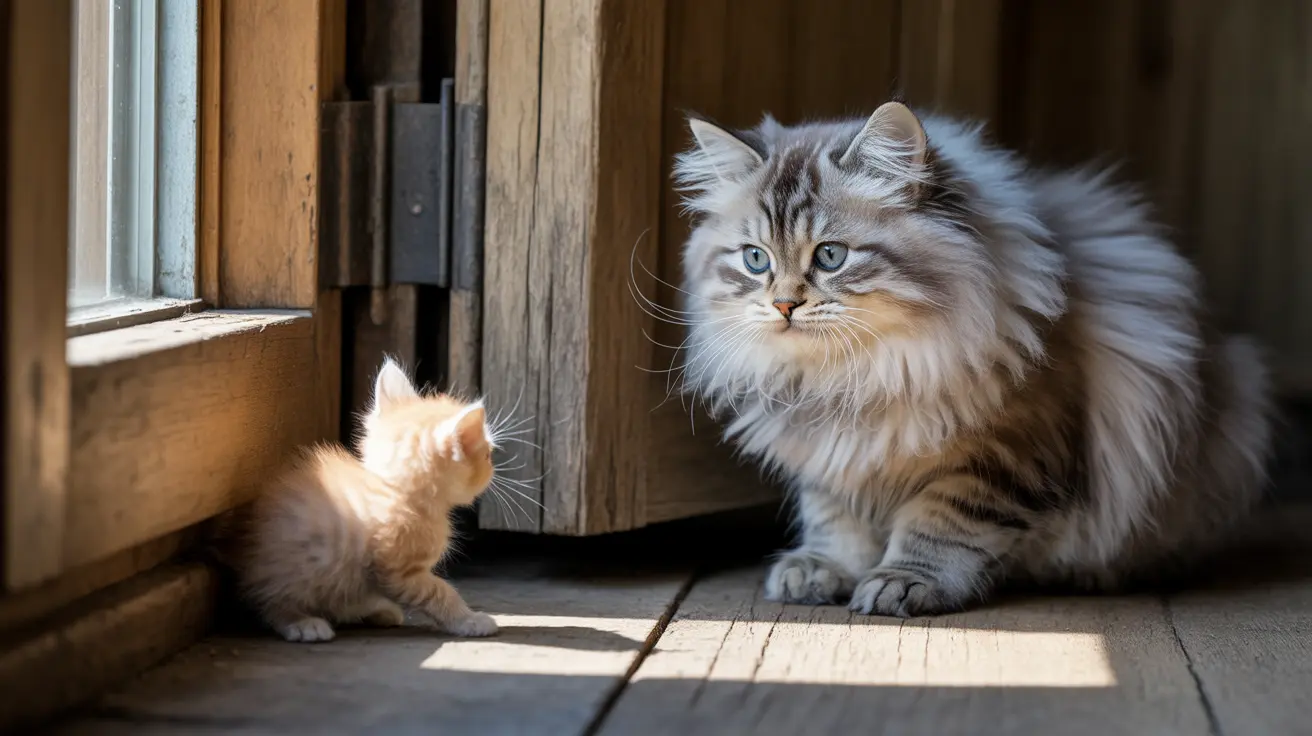Understanding Your Cat's Negative Reaction
Cats are naturally territorial creatures, and your resident cat likely views your home as their exclusive domain. When a new kitten arrives, it represents a potential threat to their established territory, resources, and routine. Your older cat's hostile reaction isn't personal – it's a natural protective response driven by instinct.
Common Signs of Feline Tension
Watch for these indicators that your cat is struggling with the new arrival:
- Hissing, growling, or swatting at the kitten
- Hiding more than usual
- Marking territory through spraying
- Changes in eating or litter box habits
- Excessive grooming or other stress behaviors
Creating a Successful Introduction Strategy
The key to fostering acceptance between your cats lies in implementing a careful, gradual introduction process. Rushing this critical period can lead to long-term behavioral issues.
The Safe Room Setup
Start by giving your new kitten a dedicated space of their own:
- A quiet room with a closed door
- Separate litter box, food, and water
- Comfortable bedding and toys
- Places to hide and perch
Scent Familiarization
Before visual introductions, help your cats become familiar with each other's scents:
- Swap bedding between cats
- Exchange toys
- Use the same brush on both cats
- Place feeding stations on opposite sides of the door
Managing the Integration Process
Once both cats are comfortable with scent exchanges, begin controlled visual introductions:
- Use a baby gate or cracked door for initial viewing
- Keep sessions short and positive
- Reward calm behavior from both cats
- Never force interaction
- Maintain separate resources throughout the process
Setting Realistic Expectations
Integration timelines vary greatly depending on individual cat personalities. While some cats may adjust within weeks, others might take several months to reach a peaceful coexistence. Focus on progress rather than perfect friendship.
Creating a Multi-Cat Friendly Environment
Support long-term harmony by optimizing your living space:
- Provide multiple litter boxes (one per cat plus one extra)
- Create vertical space with cat trees and shelves
- Ensure numerous hiding spots and retreat areas
- Maintain separate feeding stations
- Offer multiple scratching posts and beds
Frequently Asked Questions
Why does my older cat hate my new kitten, and how can I understand their behavior?
Your older cat's negative reaction stems from territorial instincts and fear of change. They may view the kitten as a threat to their resources, routine, and established territory. This behavior is natural and usually temporary with proper management.
What are the best steps to safely introduce a new kitten to a resident cat who is hostile?
Start with complete separation, using a safe room for the kitten. Gradually progress through scent exchange, visual contact through a barrier, and supervised interactions. Always move at the pace of the more hesitant cat.
How long does it usually take for an older cat to accept a new kitten at home?
The adjustment period can range from a few weeks to several months. Each cat is unique, and forcing interactions can prolong the process. Focus on steady progress rather than rushing to a specific timeline.
What signs of stress or aggression should I watch for when introducing my kitten to my older cat?
Watch for hissing, growling, excessive hiding, changes in appetite or litter box habits, aggressive charging, and territorial marking. These behaviors indicate the introduction process needs to slow down.
How can I reduce territorial conflicts and make both cats feel comfortable in the same household?
Provide multiple resources (litter boxes, food bowls, beds), create vertical space, maintain separate territories initially, and ensure each cat has retreat options. Use positive reinforcement to reward calm behavior.
Conclusion
While it can be distressing when your cat hates your new kitten, remember that with patience and proper introduction techniques, most cats can learn to coexist peacefully. Focus on creating positive associations, maintaining separate resources, and allowing both cats to adjust at their own pace. If problems persist, don't hesitate to consult with a veterinarian or feline behaviorist for additional guidance.






